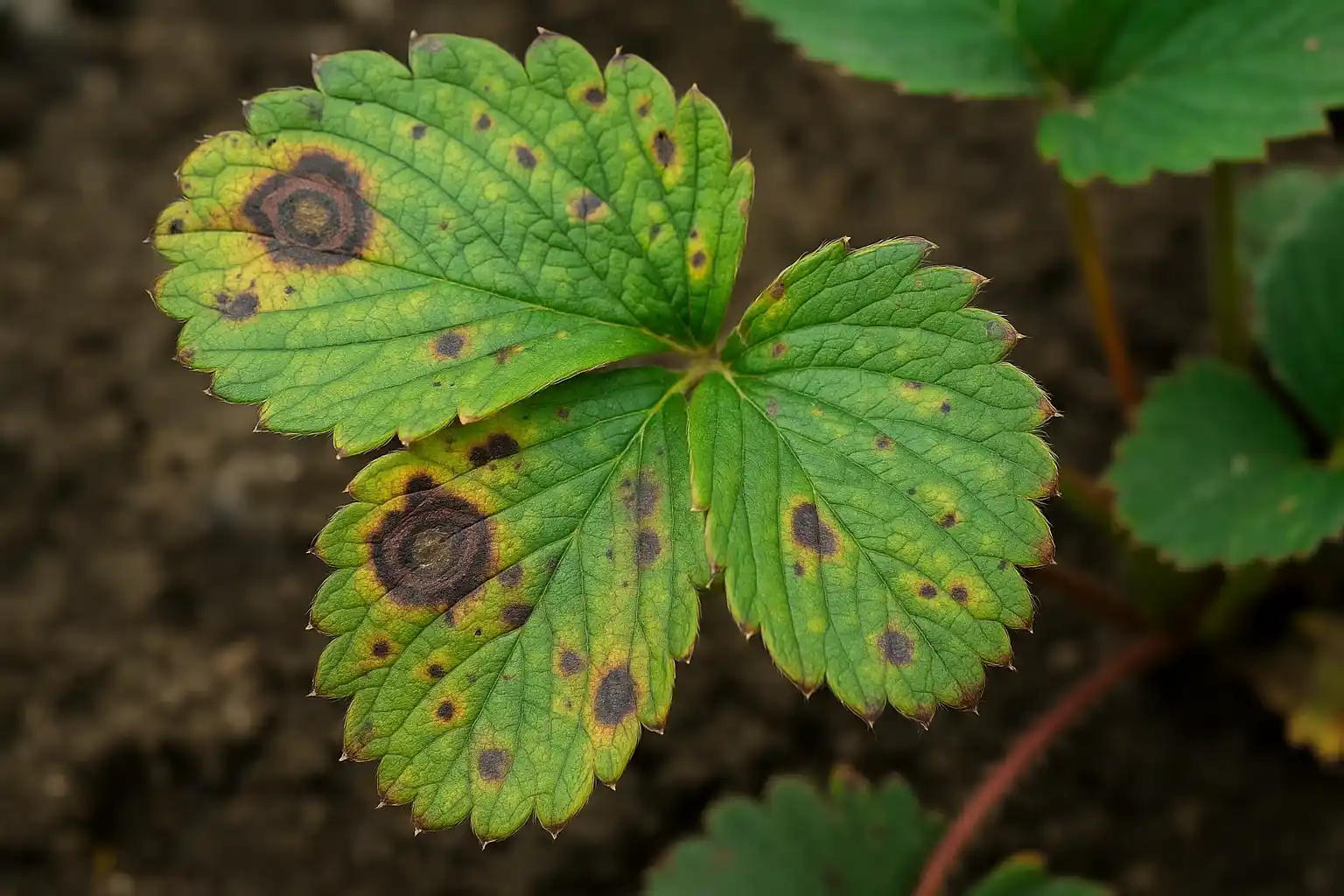Phổ biến
Most Common Plant Diseases and How to Treat Them
Plants are susceptible to a wide spectrum of pathogens—fungi, bacteria, and viruses—that compromise their physiology, growth, and productivity. In both horticultural and agricultural systems, timely diagnosis and treatment are critical.
This article outlines the most frequent plant disease types encountered by gardeners and growers. We’ll describe their etiology, diagnostic features and management strategies.
Powdery Mildew
Causal agents: Erysiphales fungi (various species depending on host plant).
Powdery mildew manifests as a characteristic white, talcum-like mycelial growth on foliage, stems, and reproductive structures. It thrives under warm days and cool nights with moderate humidity, even in the absence of leaf wetness. Infected tissues exhibit chlorosis, necrosis, and reduced photosynthetic efficiency.
Management:
Prune dense canopies to reduce relative humidity and improve air circulation.
Irrigate at the soil level; avoid wetting the foliage.
Apply fungicides containing sulfur, potassium bicarbonate, or myclobutanil.
For organic systems, foliar sprays with neem oil or diluted milk (1:9 ratio) show suppressive effects.

Root Rot
Causal agents: Pythium, Phytophthora, and Rhizoctonia species.
This soilborne disease arises from waterlogged substrates with poor aeration. Infected root tissues are soft, brown to black, and emit a foul odor due to anaerobic conditions. Aboveground symptoms include wilting, chlorosis, stunted growth, and eventual collapse.
Management:
Remove the plant, excise necrotic root tissue, and replant in a sterile, well-draining substrate.
Incorporate coarse perlite, bark, or sand to enhance drainage.
Disinfest containers and tools with a 10% bleach solution before reuse.
Biological control agents such as Trichoderma harzianum may suppress pathogens.
Leaf Spot Diseases
Causal agents: Numerous fungi (e.g., Alternaria, Cercospora, Colletotrichum) and bacteria (Xanthomonas, Pseudomonas).
Leaf spots are expressed as discrete necrotic lesions, often with chlorotic halos. Lesions may coalesce, leading to premature defoliation and diminished photosynthetic area. Bacterial leaf spots typically appear water-soaked and translucent before turning necrotic.
Management:
Collect and destroy fallen infected leaves to reduce inoculum.
Maintain proper plant spacing to limit canopy humidity.
Apply copper-based fungicides or bactericides where permitted.
Rotate crops and avoid continuous monoculture to disrupt pathogen cycles.

Rust Diseases
Causal agents: Obligate parasitic fungi in the order Pucciniales.
Rust infections are recognized by uredinia producing reddish, orange, or yellow pustules on abaxial leaf surfaces. Severe infections weaken plants by reducing photosynthetic capacity and may induce premature leaf abscission.
Management:
Remove infected foliage promptly.
Provide adequate spacing and air circulation to lower humidity.
Apply protective fungicides containing sulfur, chlorothalonil, or systemic products like propiconazole.
Eliminate alternate hosts where rust fungi complete heteroecious life cycles.
Botrytis Blight (Gray Mold)
Causal agent: Botrytis cinerea.
A ubiquitous necrotrophic fungus, Botrytis thrives in cool, humid environments. Infected tissues develop water-soaked lesions covered with gray sporulating mycelium. Flowers, buds, and fruits are particularly vulnerable, leading to significant post-harvest losses.
Management:
Remove and dispose of infected plant material immediately.
Increase airflow with fans or pruning in greenhouse settings.
Maintain relative humidity below 85% to inhibit sporulation.
Apply fungicides containing iprodione, boscalid, or biofungicides based on Bacillus subtilis.
Mosaic Viruses
Causal agents: Tobacco mosaic virus (TMV), cucumber mosaic virus (CMV), and others.
Viral diseases induce mottling, mosaic patterns of light and dark green, leaf distortion, and stunted growth. Unlike fungi or bacteria, viruses cannot be eradicated once systemic infection is established. Transmission occurs mechanically or via insect vectors such as aphids and thrips.
Management:
Immediately rogue and destroy symptomatic plants.
Disinfect tools and hands after contact; TMV is highly stable on surfaces.
Control insect vectors with integrated pest management (IPM) strategies.
Plant resistant cultivars when available.
Blights
Causal agents: Phytophthora infestans (late blight in Solanaceae), Alternaria solani (early blight in tomatoes and potatoes).
Blight causes rapid necrosis of foliage and stems, often during periods of extended leaf wetness. Late blight lesions are irregular, water-soaked, and brown, sometimes with white sporulation at lesion margins. Early blight presents concentric ring patterns within lesions.
Management:
Employ crop rotation and avoid nightshade crop monoculture.
Use drip irrigation to minimize leaf wetness.
Apply fungicides containing mancozeb, chlorothalonil, or systemic fungicides like metalaxyl for high-risk crops.
Remove and discard infected plant residues at season’s end.
Preventive Measures Across All Diseases
Prevention is the foundation of plant health management. Key cultural practices include:
Proper irrigation: Water early in the day at soil level to minimize leaf wetness.
Sanitation: Sterilize pruning shears, pots, and benches between uses.
Soil health: Use sterile potting media and avoid reusing contaminated soil.
Ventilation: In greenhouses, maintain adequate air exchange to reduce relative humidity.
Resistant varieties: When available, select cultivars bred for resistance to known pathogens.
Conclusion
Plant diseases are a constant challenge in cultivation, but informed diagnosis and proactive management allow gardeners and growers to maintain plant vigor and productivity.
Early detection—sometimes aided by digital tools such as plant identification and disease recognition apps—empowers gardeners to respond quickly and effectively, ensuring healthy growth and reduced crop loss.



